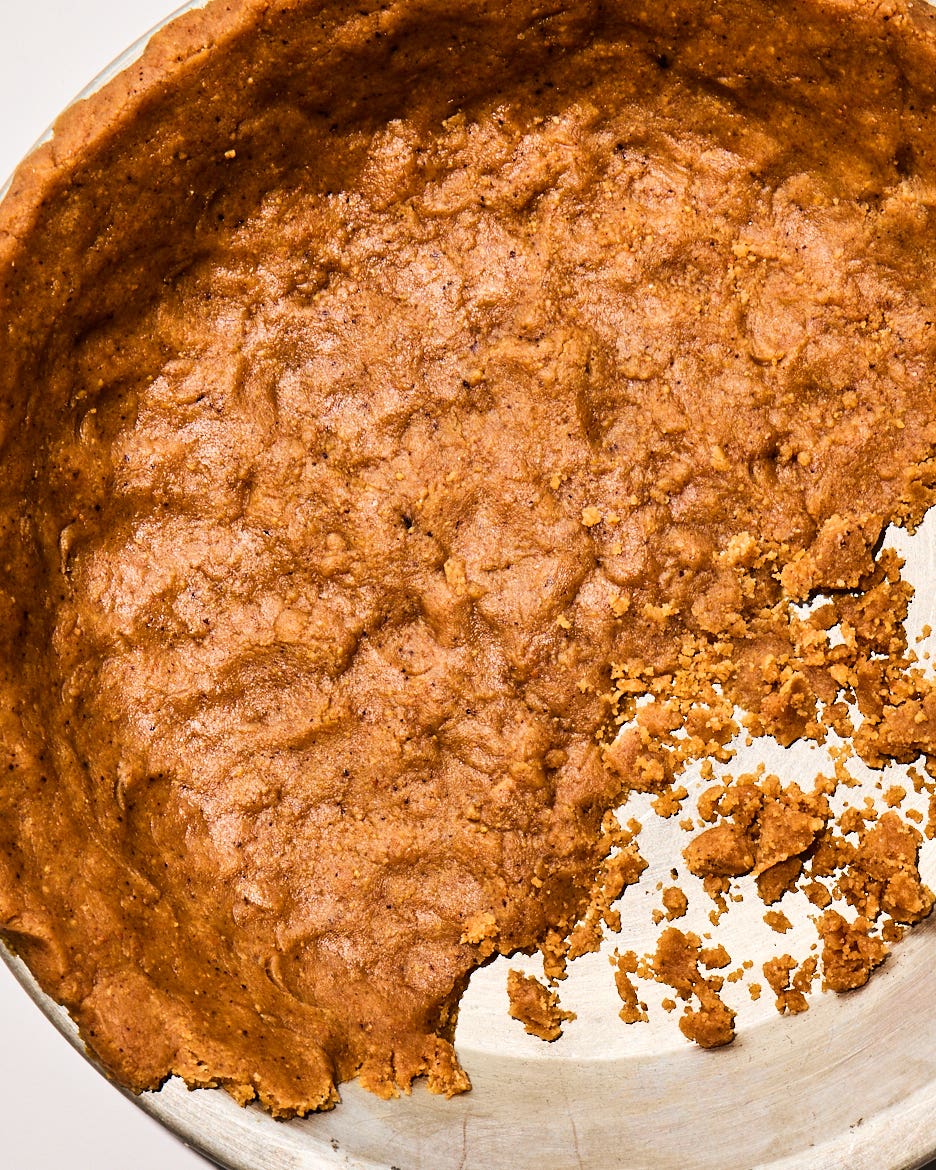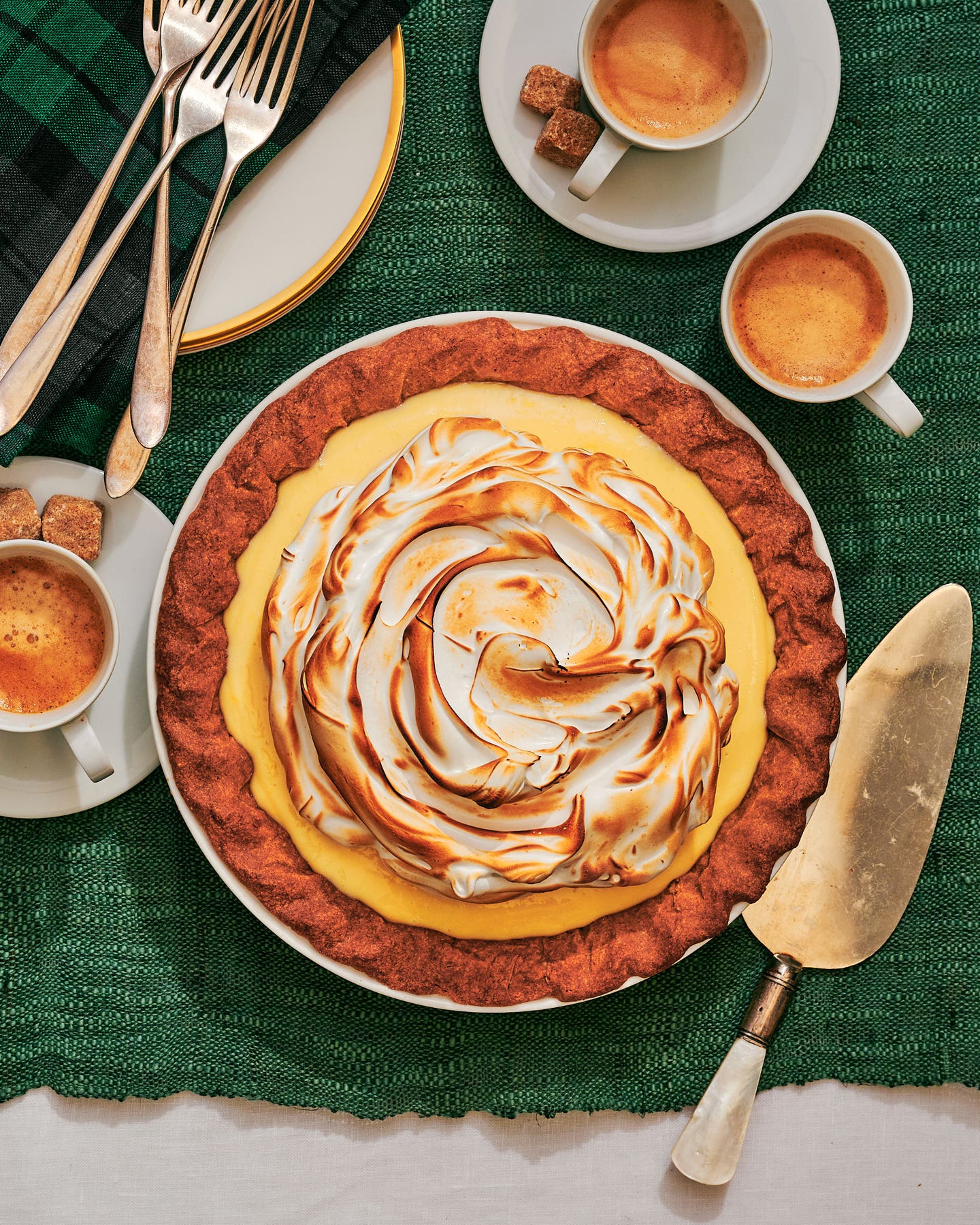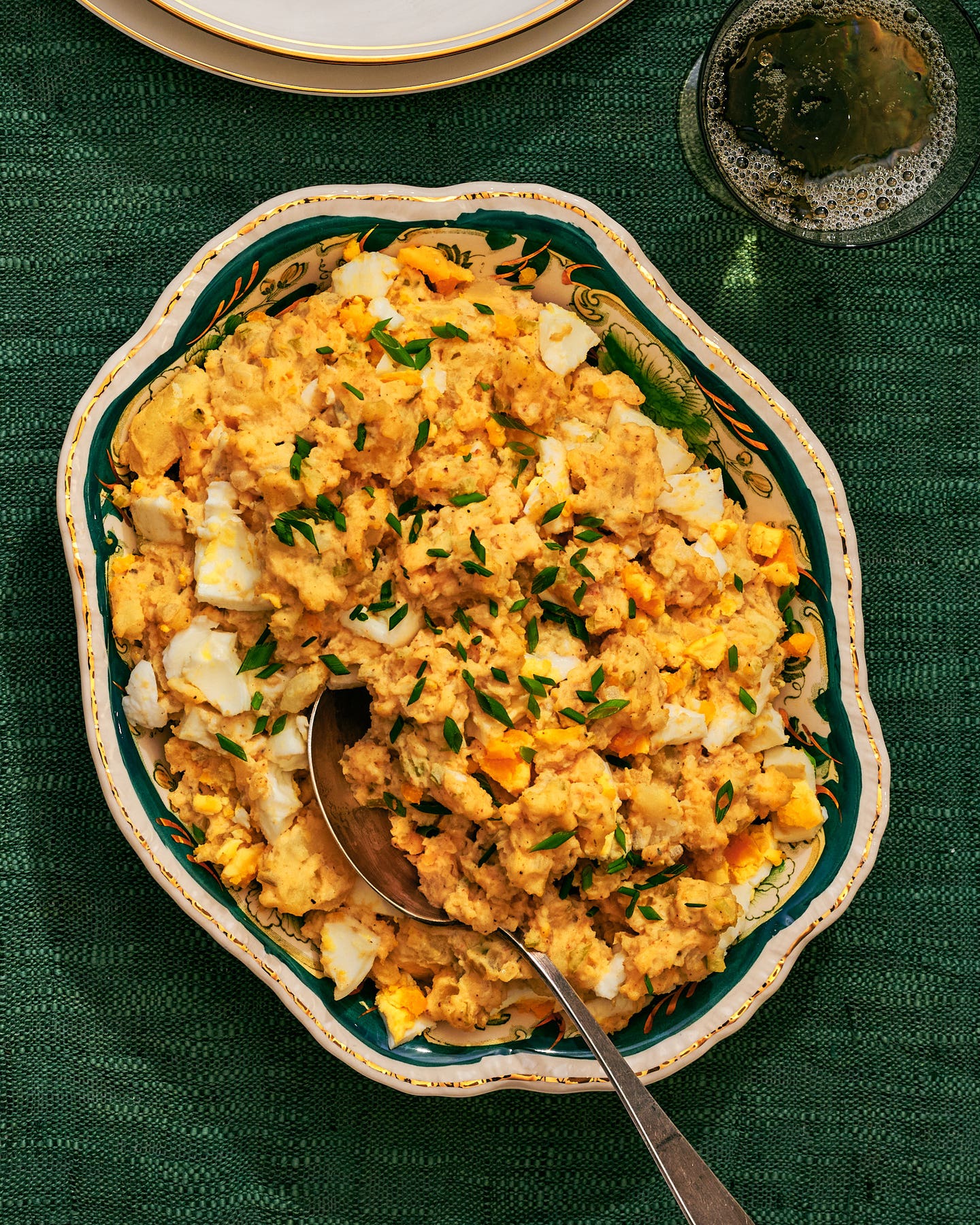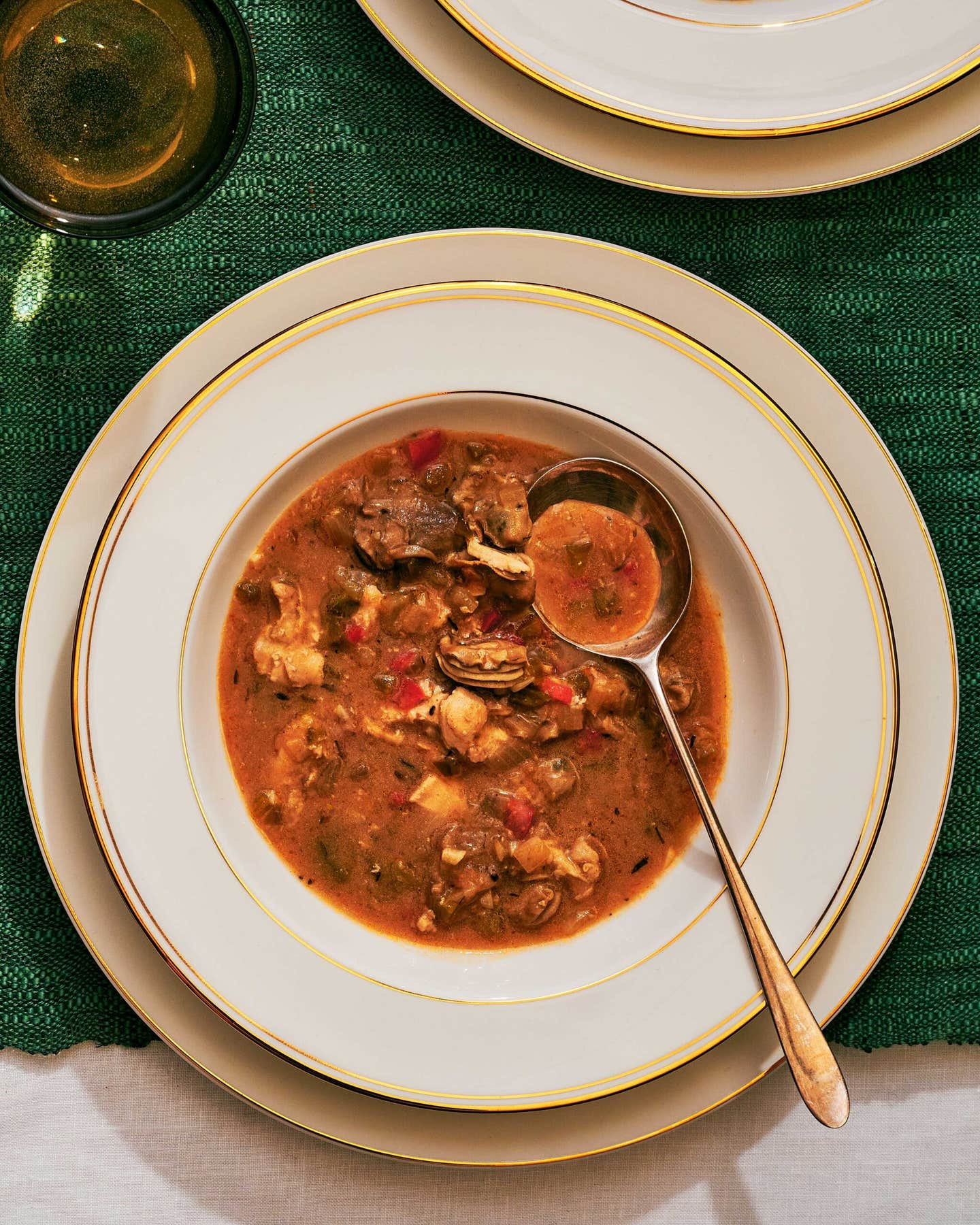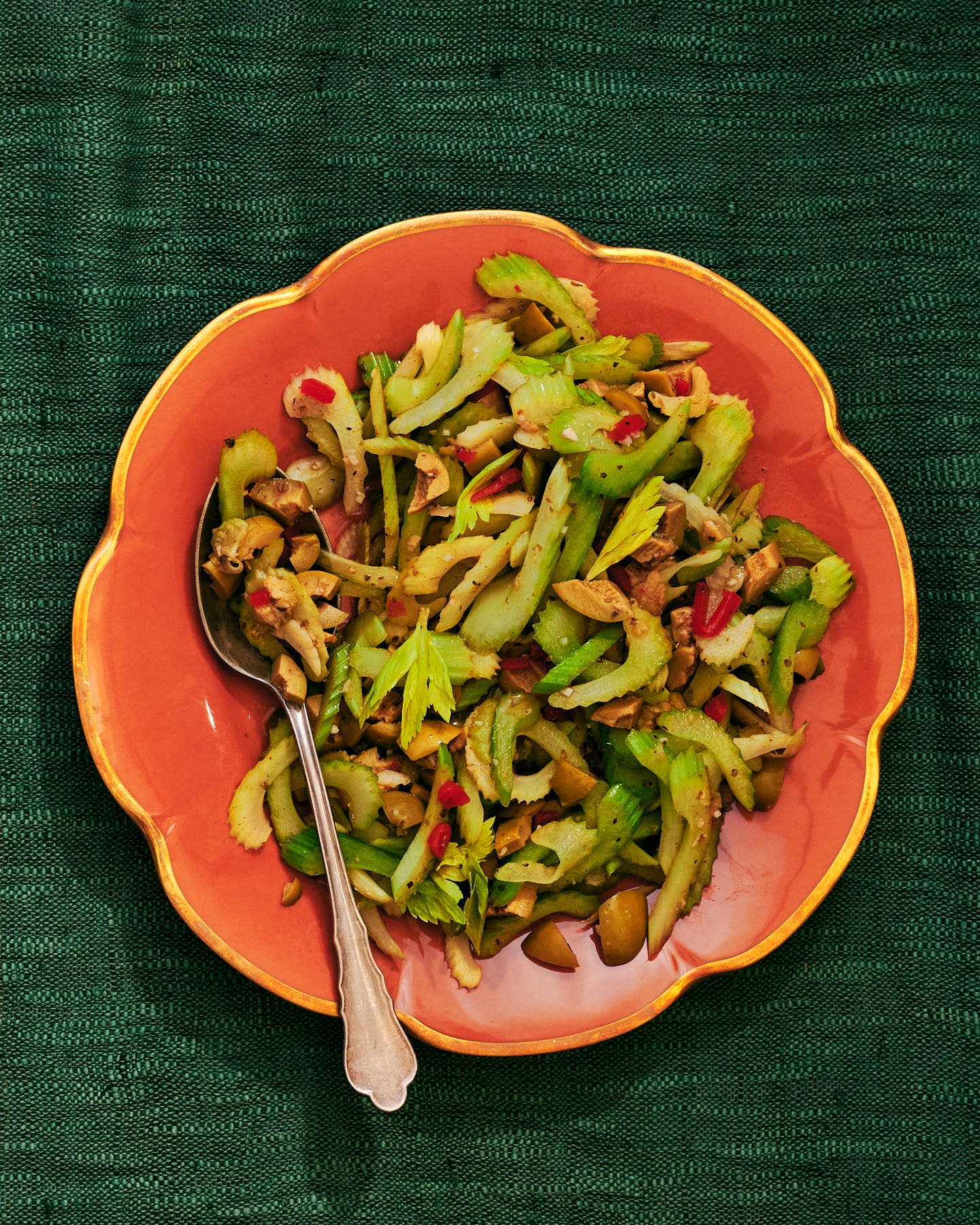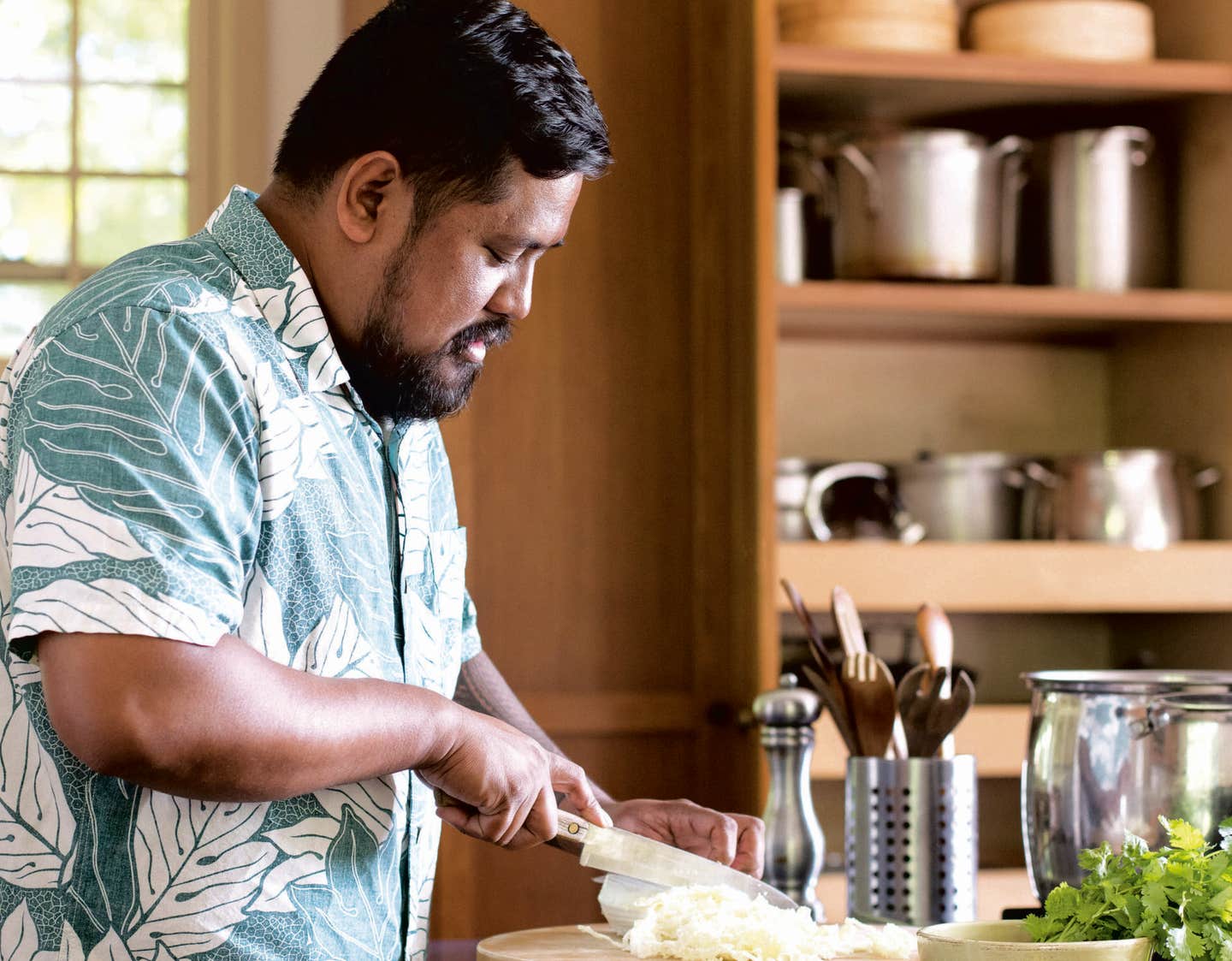
Talking Hawaiian Home Cooking With Sheldon Simeon
The Maui chef and cookbook author discusses off-duty family dinners and island-style grilling.
The Hawaiian phrase kama’āina has multiple meanings, but the most direct translation is “child of the land.” This has changed over time to embrace everyone local to the islands, regardless of their racial heritage. For Maui-based chef and Cook Real Hawai’i author Sheldon Simeon, the expression underscores the love for culture and community that comes with every nourishing meal.
A descendent of sakadas—Filipino sugarcane workers who migrated in the early 20th century—Simeon celebrates not only the food his grandparents brought with them, but also the joyful mashup that represents the local Hawaiian palate, from Chinese cake noodle to Okinawan pig’s feet rafute, Portuguese “pocho” steamed clams to Korean kalbi. Even ingredients as modest as canned sardines and Spam get respect in his new collection of everyday dishes, some developed at his mom-and-pop restaurant Tin Roof, others based on childhood takeout favorites from okazuya delis in Hilo.
Simeon’s recipes reflect a deep connection to ‘ohana, the greater Hawaiian family that typically includes loosely related aunties and uncles, friends, and neighbors. All of whom show up for backyard luaus with big pots of stew, foraged pohole ferns and limu seaweed, reef fish snagged right off the beach, or a pan of butter mochi or pies made with half-wild fruit plucked roadside. Poi—pounded taro root—which appears on all Hawaiian tables regardless of ancestry, changing in character and flavor as it ferments, from sweet and soupy to dense and pleasantly sour, is another essential side dish at these ‘ohana gatherings.

In the introduction to his new book, Simeon writes: “These are foods that capture the spirit of immigrants, both recent and long-settled….though every local has their own traditions and perspectives, these are mine—one small fraction of what makes up the heart and soul of Hawai’i.”
Here, Simeon answers our burning questions about what’s cooking in his kitchen.
SM: What was it like growing up on the Island of Hawai’i?
SS: The Hamakua Coast is magical. My grandparents and brother still live out there. My family would go to Hakalau to pick pohole [fiddlehead fern], and catch opihi prawns and small fry in the rivers. We had a bartering system back then. Food was money. My dad was a welder, so if he fixed a fence, then smoke meat or fried fish would appear at the doorstep. That’s how we learned to respect food.
What was the first dish you learned to cook?
You grow up in Hawai’i, you better learn to cook rice. You wash it enough, add the right amount of water, and better press the button to turn the cooker on. Tiger is the old-school rice cooker brand that still lasts, but it didn’t have the warming feature back when I was growing up. Rice always sat in a pot on the countertop; sometimes I ate rice that sat out for two or three days.
What do you cook on your days off?
Soups like Filipino-style lauya, made with pork shank or beef shank, hearty rough-tough meat that simmers down six to eight hours. You can’t make a small batch. Add some ginger, bay leaf, peppercorns, season it with a ton of fish sauce, cabbage, and potatoes. Start it Saturday night, wake up Sunday, eat it, take a nap, and then eat it again for dinner. Add some chile pepper water. It clears your palate, that moment of spice and acid.
Which recipes in the book are from your family?
The pork and peas was taught to my dad by his uncle, and it’s the most requested dish for large parties. The coconut shrimp we created is kind of tongue-in-cheek. It’s a play on honey walnut shrimp that’s been in my family forever.
Who is the best cook in the Simeon ‘ohana?
Grandpa and his cousin. When it comes to the kitchen they’ve got the touch, but my mom was always in the background. I miss her so much.
What is the Hawaiian mother sauce?
Shoyu and sugar. That salty-sweet combo. Immigrants were limited to what was available, not like back home in Japan or Korea, where the sauce is more balanced and has a bigger flavor profile. Our teriyaki sauce is practically candy. And if it’s not like candy, it’s not Hawaiian kalbi. My shoyu sugar steak has a basting sauce thickened with brown rice that’s been toasted and pulverized. It helps the shoyu sugar cling to the steak, so you end up with a caramelized crust.
Which soy sauces are on your kitchen shelves?
I grew up with Aloha shoyu, but Yamasa is my favorite, especially with seafood. And for my adobo, I use Silver Swan.
It’s grilling season, and your recipe for uhu (parrotfish) stuffed with lap cheong looks tempting. What’s a good substitute for reef fish species on the mainland?
You could sub a filet of salmon. I’ve also done it with barramundi and mahi mahi. And if you can’t get fresh ti leaves, look for banana leaves in the freezer aisle or fresh at Asian markets.
You write that poi has to be eaten in Hawai’i to be really appreciated. So tell me, two-finger or three-finger poi? The thicker the poi, the fewer fingers you need to scoop it up, right?
Two! Poi is like bread. If you only ever tasted white bread and you didn't know about sourdough made from a 400-year-old mother—that’s how I feel about GMO poi blended in a Vitamix, instead of that hand-pounded kind from a Waipi’o Valley lo’i [taro pond].
Before you go back to the kitchen: What are some of the places that have inspired your cooking so we can eat local too?
The honey walnut shrimp at Tiffany’s Bar & Grill is a must in Wailuku. Pukulani Superette makes homestyle lau lau. Down from my house where I grew up in Hilo, Ling’s Chop Suey House for the crispy chicken with oyster sauce. And Ken’s House of Pancakes. Me and the boys always find ourselves there.
This interview has been edited and condensed for clarity.
Recipes


Keep Reading
Continue to Next Story





